In This Issue
- Nation Cybersecurity
- Time to Fix Policies
- DHS Priority for 2017
- Report from the CEO
- Senate Cyber Hearing
- Visual Map of Trends
- Email Fraud Threats
- Industrial Revolution
- Nixplay Verizon Cloud
- Telefonica and Nokia
- Hughes Hubbard IP
- Offshore Phenomenon
- Cloud Market Growing
- Microsoft’s Strategy
- Fog Market 55% CAGR
- The Future Is Foggy
- Coming DCIA Events
Priorities for Enhancing National Cybersecurity
Excerpted from Nextgov Report by Jamie Brown
 Presidential transitions are a time of considerable change in government, including new agency leaders and evolving policy priorities.
Presidential transitions are a time of considerable change in government, including new agency leaders and evolving policy priorities.
But many issues persist, and this is certainly the case with cybersecurity.
Advancing our nation’s cybersecurity posture must be a key priority for the Trump administration, especially if we are to maximize the benefits of digital transformation.
The nonpartisan Commission on Enhancing National Cybersecurity – which includes cybersecurity experts from industry, academia and government – recently delivered policy recommendations and action items for consideration by the new President and Congress.
The comprehensiveness of the report reflects the public-private approach the commission took in seeking input on what our nation’s cybersecurity priorities should be in the years ahead.
Still, there are several areas that should be prioritized and improved upon… Read More
Time to Fix Our Cybersecurity Policies
Excerpted from The Hill Report by Frances Zelazny
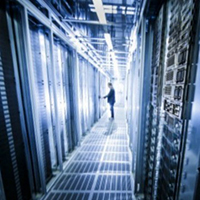 Last fall, the Federal Reserve, the Office of the Comptroller of the Currency (OCC) and the Federal Deposit Insurance Corporation (FDIC) proposed new rules for enhanced cyber risk management standards.
Last fall, the Federal Reserve, the Office of the Comptroller of the Currency (OCC) and the Federal Deposit Insurance Corporation (FDIC) proposed new rules for enhanced cyber risk management standards.
These latest standards follow existing federal legislation and regulation dating back to 1978 for risk assessment and management in the banking sector.
At the same time, the Department of Financial Services in New York is developing new rules to provide minimum requirements and deadlines for financial institutions doing business in the state.
Ongoing reports of hacks ensure that there will be pressure to continue to strengthen cybersecurity guidelines and protect consumers from fraud, identity theft, ransomware and other cybercrimes.
The incoming administration, despite its deregulatory instincts, cannot ignore the facts.
According to Forbes, there are approximately 500,000 cyberattacks every day, which are projected to cost more than $2 trillion by 2019… Read More
The Cybersecurity Priority for DHS in 2017
Excerpted from Federal Times Report by Chuck Brooks
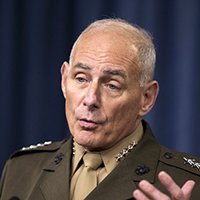 As one of his first national security appointments, President-elect Donald Trump has selected retired Marine Gen. John F. Kelly to lead the Department of Homeland Security (DHS).
As one of his first national security appointments, President-elect Donald Trump has selected retired Marine Gen. John F. Kelly to lead the Department of Homeland Security (DHS).
Kelly is widely recognized for his expertise in counterterrorism, his dedication, composure and intellect.
He is especially known for his excellent leadership skills honed by more than 40 years of military service, including as the Commander of US Southern Command.
There will be a multitude of issues Kelly will address in his new role as DHS secretary.
The DHS mission of protecting the homeland includes knowledge of areas such as law enforcement, counterterrorism, emergency management, cybersecurity, protecting critical infrastructure, and detecting and negating potential weapons of mass destruction. All these areas will get strong attention by the new secretary.
One area where DHS is certain to continue to assume a special role and profile is cybersecurity.
Cybersecurity is a major challenge to the nation’s economic and security welfare… Read More
Report from DCIA CEO Marty Lafferty
 The CTA’s enormous and strategically important CES achieved the half-century mark this week in Las Vegas, NV, with the DCIA marking our first decade in being an Allied Association of CTA for this seminal event.
The CTA’s enormous and strategically important CES achieved the half-century mark this week in Las Vegas, NV, with the DCIA marking our first decade in being an Allied Association of CTA for this seminal event.
We are grateful to be able to participate at this level.
Our key takeaways from 2017’s successful and very valuable global technology trade show are that the distributed computing industry’s contributions of cloud computing, artificial intelligence, and internet of things (IoT) enabling mechanisms are now playing a critical role in advancing innovation and impacting the consumer marketplace in meaningful ways.
Smart-home accessories, Ultra HD (or 4K) television sets, and autonomous vehicles predominated the show, exemplifying implementations of these technologies.
Internet-connected remotely-controllable home appliances are now being enhanced with artificially intelligent virtual assistants, like Alexa and Siri, making this entire category more user friendly for consumers and easier for smart-home product manufacturers to enter in partnership with consumer technology industry leaders.
All aspects of the connected home environment, from security to monitoring to lighting to temperature management to cleaning to entertainment, benefited from innovative entries at this year’s CES.
Ensuring compatibility with consumers’ already owned Amazon, Google, or Apple smart communications devices is now becoming a key pre-purchase consideration.
With Ultra HD offering twice the resolution of 1080p TVs, this year’s CES saw the addition of high dynamic color range software as well as extremely thin wall-mountable screens, along with a larger number of connected streaming and gaming devices compatible with 4K.
And finally, unmanned aircraft vehicles (UAVs or drones) saw a great many new entries this year, with more attractive price points than prior years, while established brands offered price reductions, in this increasingly competitive and rapidly growing category.
Drone enhancements ranged from more robust tracking capabilities to increased flight ranges to more flexible and dynamic onboard camera controls.
Positive energy, confidence, and enthusiasm abounded among delegates with whom we met.
If you have never attended a CES, or haven’t done so lately, we strongly encourage you to consider doing so next year. Share wisely, and take care.
Senate Cybersecurity Hearing Highlights Challenges
Excerpted from Wall St. Journal Report by Steven Norton

During the first public hearing about suspected Russian interference in the 2016 US election, top intelligence officials highlighted the increasingly complex nature of cyberattacks and the challenges of creating a unified way to respond to them.
“The complexity of technological advances, both in the tools themselves and the methods used to compromise them, necessitates a much greater technical and cyber literacy than what was required of us even five years ago,” said a joint statement by Director of National Intelligence James Clapper, National Security Agency Director Adm. Michael Rogers, and Marcel Lettre, undersecretary of defense for intelligence.
The ability for hackers to influence the electoral process may spur the United States to speed the development of a stronger and more detailed cybersecurity strategy, said Matthew Waxman, a professor at Columbia Law School and a former senior national security official under President George W. Bush.
But the changing magnitude of cyberattacks, their targets and the technologies used to execute them makes a unified response challenging.
“We want to get to a place where we can communicate to adversaries and partners what kinds of activities we won’t tolerate… Read More
Visual Map of Emerging Cybersecurity Trends
Excerpted from TechRepublic Report by Dan Patterson
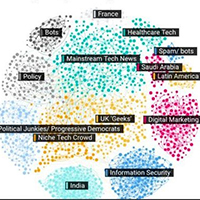 Last year consumer, corporate, and political targets were hammered by ransomware extortion attempts, phishing excursions, and DDoS attacks. Driven by this slew of high-profile attacks, cybersecurity has rapidly emerged as a priority in 2017 for enterprise companies and SMBs.
Last year consumer, corporate, and political targets were hammered by ransomware extortion attempts, phishing excursions, and DDoS attacks. Driven by this slew of high-profile attacks, cybersecurity has rapidly emerged as a priority in 2017 for enterprise companies and SMBs.
To visualize emerging cybersecurity issues, TechRepublic and data firm Affinio sampled and diagrammed social media data from influential communities.
TechRepublic previously used Affinio technology to better understand digital business trends, including voter priorities during the 2016 presidential campaign, how tech groups talk about Edward Snowden, and web media related to the Russian cyberattack.
Affinio extracts insights from web, mobile, and social media data.
The company’s algorithm grabs snapshots of naturally-forming user clumps and communities, then visualizes how each group is connected.
For example, unsurprisingly, health care experts tend to communicate online with other health care experts… Read More
Email Fraud Tops Enterprise Security Threats
 Bank heists and data breaches saw no shortage in 2016, and corporates large and small could no longer avoid the risk of a cyberattack.
Bank heists and data breaches saw no shortage in 2016, and corporates large and small could no longer avoid the risk of a cyberattack.
Still, researchers have found, many businesses do just that: RedSeal released a report this month that described the state of corporates’ approach to enterprise security as one of “cyber naïveté,” with many executives believing that their existing strategies are sufficient to ward off a cyberattack.
Half of companies surveyed, however, are depending on outdated technologies and solutions to stay secure.
Mike Vigue, Vice President, Product Strategy, cyberfraud and risk management at B2B payments firm Bottomline Technologies, warns that ongoing use of paper checks, fraudulent emails and general ignorance of cyberthreats will continue to place businesses – and their payment activities – at the center of thieves’ targets.
But, Vigue added, 2017 will be a year of continued innovation in the technology that can prevent, detect and mitigate a corporate cyberattack. “2017 will see a continued rise in cybersecurity threats particularly around business email compromise, ransomware and malicious insiders… Read More
Are You Ready for Fourth Industrial Revolution?
Excerpted from DataQuest Report by Parag Arora
 2016 has been a year that is likely to be marked in history as the year that witnessed the onset of the Fourth Industrial Revolution – an era where the physical and digital worlds will converge to transform the way we live and do business.
2016 has been a year that is likely to be marked in history as the year that witnessed the onset of the Fourth Industrial Revolution – an era where the physical and digital worlds will converge to transform the way we live and do business.
And while we have heard a lot of buzz around it this year, 2017 will be the year when it kicks in full force.
It was also the year when we at Citrix redefined our vision and strategy to power a world where people, organizations and things are securely connected and accessible.
This, based on mobile, cloud, big data analytics, and Internet of Things (IoT) – four forces, the adoption and convergence of which will fuel the Fourth Industrial Revolution.
The flipside of the dawn of the new era, from an organization’s perspective, is the technological complexity, heterogeneity and information overload that comes with convergence.
Given this, we believe the following factors will determine how the business landscape takes shape in the coming years, beginning with 2017… Read More
Nixplay Integrates Verizon Cloud
Excerpted from Company Press Announcement

Nixplay, the leading producer of high-resolution IPS WiFi Cloud Photo Frames and America’s number one selling frame, today announced that it has integrated the Verizon Cloud consumer mobile application with the entire cloud-connected frame lineup.
Through Verizon’s open application programming interfaces (APIs), Nixplay is now able to provide customers access to their photos and files that may be stored in the Verizon Cloud, which helps pave the way for the future of Nixplay’s market-leading platform.
“We are committed to providing our customers access to their most valuable memories across all platforms and formats,” said Mark Palfreeman, founder and CEO of Nixplay.
“The extension of the Verizon Cloud to our Nixplay frames ensures that family and friends around the world can share the content that means the most to them.”
As a mobile-first cloud storage solution, the Verizon Cloud is a natural extension for the Nixplay’s cloud platform as more and more users generate content and data on their mobile phones… Read More
Telefonica Deploys Nokia Virtualized Router
Excerpted from Company Press Announcement
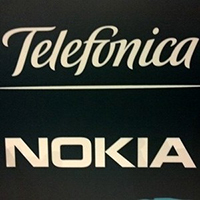 Telefonica Business Solutions, a leading provider of a wide range of integrated communication solutions for the B2B market, has deployed Nokia’s virtualized router technology in a live network for an improved delivery of Telefonica’s global telecommunication services.
Telefonica Business Solutions, a leading provider of a wide range of integrated communication solutions for the B2B market, has deployed Nokia’s virtualized router technology in a live network for an improved delivery of Telefonica’s global telecommunication services.
In particular, Telefonica is augmenting its IP infrastructure with the deployment of virtualized Provider Edge routers (vPE) to increase its network reach, accelerate deployment of its enterprise virtual private network (VPN) services and extend its service offerings to new points of presence within Spain and to new countries.
The new technology will expand Telefonica’s opportunity to offer extended reach and improved connectivity to its customers.
The deployment of the Nokia Virtualized Service Router (VSR) in a Provider Edge (PE) application for fixed networks represents a significant step forward in the evolution of telco cloud infrastructure.
Telefonica can now rapidly deploy and configure vPEs to extend their VPN service offerings to new off-net sites and locations.
In addition, this technology will allow Telefonica to deploy new on-net points of presence (PoPs)… Read More
Hughes Hubbard Expands IP Practice
Excerpted from Company Press Announcement
 Hughes Hubbard & Reed LLP announced that Khue V. Hoang has joined the firm as partner in the New York office.
Hughes Hubbard & Reed LLP announced that Khue V. Hoang has joined the firm as partner in the New York office.
Khue is an intellectual property (IP) and technology lawyer who advises clients on a broad range of patent litigation and licensing matters.
She joins Hughes Hubbard from Ropes & Gray.
Khue has extensive experience representing clients in patent infringement, patent prosecution, and licensing proceedings.
A former process and product engineer for Rockwell Semiconductor Systems, Khue brings an understanding of industrial and corporate knowledge that leads to effective and efficient legal solutions for high-stakes litigation and patent enforcement work.
“Khue spent years working on complex engineering and design projects, and she has leveraged that experience to deliver tremendous value to her legal clients,” said Ted Mayer, Managing Partner of Hughes Hubbard.
“Particularly when you are dealing with technology patents and complex IP issues, it’s incredibly helpful to have an engineer at the table… Read More
Trump and the Offshore Phenomenon
Excerpted from MSPmentor Report by T.C. Doyle

If tech positions can be offshored from San Francisco and other markets where talent is in high demand, what does this mean for tech support jobs elsewhere, including where you work?
Come February, the University of California San Francisco (UCSF) will eliminate 100 IT support jobs and ship them off to India as part of a broader plan by the University system to save as much as $30 million over five years, according to a report from National Public Radio (NPR).
The decision has rankled more than a few in the Bay Area, where even basic tech jobs pay as much as $100,000 annually.
Before you turn your ire to UCSF, note that the school provides a great deal of medical care to the poor and thus looks to reduce spending, including labor costs, where possible.
This is why it was one of the first to introduce automated, robotics-controlled pharmacies that “automatically dispense prescriptions,” according to Forbes.
But the offshoring of IT services jobs to HCL of India has attracted negative publicity ever since it was first reported by Computerworld… Read More
Cloud Market $148 Billion & Growing 25% per Year
Excerpted from CloudTech Report by James Bourne
 Operator and vendor revenues across the main cloud services and infrastructure market segments hit $148 billion in 2016 growing at 25% annually, according to the latest note from analyst firm Synergy Research.
Operator and vendor revenues across the main cloud services and infrastructure market segments hit $148 billion in 2016 growing at 25% annually, according to the latest note from analyst firm Synergy Research.
Infrastructure as a service (IaaS) and platform as a service (PaaS) experienced the highest growth rates at 53%, followed by hosted private cloud infrastructure services, at 35%, and enterprise SaaS, at 34%. Amazon Web Services (AWS) and Microsoft lead the way in IaaS and PaaS, with IBM and Rackspace on top for hosted private cloud.
In the four quarters ending September (Q3) 2016, total spend on hardware and software to build cloud infrastructure exceeded $65bn, according to the researchers.
Spend on private cloud accounts for more than half of the overall total, but public cloud spend is growing much more rapidly. The note also argues unified comms as a service (UCaaS) is growing ‘steadily’.
“We tagged 2015 as the year when cloud became mainstream and I’d say that 2016 is the year that cloud started to dominate many IT market segments,” said Jeremy Duke, Synergy Research Group founder and chief analyst.
“Major barriers to cloud adoption are now almost a thing of the past, especially on the public cloud side… Read More
Future of Cloud Survey Validates Microsoft’s Strategy
Excerpted from GuruFucus Report by Sangara Narayanan
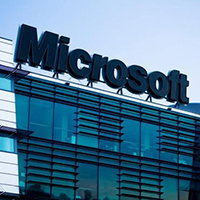 In a recent cloud survey conducted by North Bridge and Wikibon, seven out of 10 companies reported that they use Software-as-a-Service (SaaS), of which 61% of companies are using one PaaS/IaaS vendor and 56% of companies are using multiple SaaS Vendors.
In a recent cloud survey conducted by North Bridge and Wikibon, seven out of 10 companies reported that they use Software-as-a-Service (SaaS), of which 61% of companies are using one PaaS/IaaS vendor and 56% of companies are using multiple SaaS Vendors.
The preference for one single cloud vendor is completely understandable; it would reduce the overall complexity of the technology work involved.
Amazon, Microsoft, IBM, Oracle, and Google are all in the cloud race with the top three running away with most of the market.
Of these five companies only Microsoft and Oracle have a solid breadth of cloud offering that includes SaaS, PaaS and IaaS.
IBM has the IaaS and PaaS components as well but lacks the breadth of in-house applications that Microsoft and Oracle have.
While IBM has its own strength in the Analytics side of the SaaS segment, Oracle is extremely strong in business management… Read More
Fog Market to Reach $202 Billion with 55% CAGR
Excerpted from Company Press Announcement
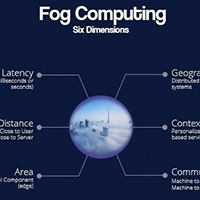 The global Fog Computing market is valued at $9.49 million in 2015 and is expected to reach $202.21 million by 2022 growing at a CAGR of 54.8% from 2015 to 2022.
The global Fog Computing market is valued at $9.49 million in 2015 and is expected to reach $202.21 million by 2022 growing at a CAGR of 54.8% from 2015 to 2022.
Fog computing is a computing technology which decentralizes application and computing resources in the most significant and valid point.
Global fog computing market key drivers are the developing internet of things (IoT) connectivity, machine to machine communication, requirement for real-time computing for time-critical process and the increasing demand for connected devices.
The rising business demand for increased operation efficiency, rapid decision-making ability, and cost savings would make fog computing an influential model for enterprises amid verticals in the future. Request a sample report here. Software segment is anticipated to grow at the highest rate over the forecast period.
Moreover, new entrants who desire to penetrate this market could simply enter the software market as it needs little initial investment in contrast to hardware… Read More
The Future Is Foggy
Excerpted from Light Reading Report by Iain Morris
 As nebulous as its name suggests, fog computing looks set to attract a lot of attention this year as one of several technologies that could support new business models and applications in the connectivity game.
As nebulous as its name suggests, fog computing looks set to attract a lot of attention this year as one of several technologies that could support new business models and applications in the connectivity game.
For mobile operators, fog computing is unlikely to be a short-term revenue opportunity, according to a new study from Heavy Reading , the market-research arm of Light Reading.
And while more progressive operators could emerge as important “enablers” of fog computing, it will be up to other players to take the lead in developing use cases, says Gabriel Brown, a senior analyst with Heavy Reading who co-authored the report.
In large part, it seems, that’s because of the considerable uncertainty that surrounds fog computing – which still evades any straightforward definition – and its commercial proposition.
Many observers see parallels with the concept of edge computing, whereby IT resources are moved out of centralized facilities and deployed at base stations or base station aggregation points, much closer to the end user. Proponents believe edge computing could help to reduce operating costs and create new service opportunities.
Fog computing appears to go a step further, however… Read More
Coming Events of Interest
Industry of Things World USA — February 20th-21st in San Diego, CA. Global leaders will gather to focus on monetization of the Internet of Things (IoT) in an industrial setting.
fintech:CODE — March 16th-17th in London, UK. A new international knowledge exchange platform bringing together all DevOps, IT, and IoT stakeholders who play an active role in the finance and tech scene. Key topics include software development, technical challenges for DevOps, DevOps security, cloud technologies and SaaS.
retail:CODE — March 16th-17th in London, UK. 20 real-life case studies, state-of-the-art keynotes, and interactive World Café sessions, 35+ influential speakers will share their knowledge at the intersection of the retail and technology sectors.
Delivery of Things World — April 24th and 25th in Berlin, Germany. Over 400 IT executives will discuss what DevOps really means for business. This event brings together all stakeholders to share their experience and expertise.
Security of Things World — June 12th and 13th in Berlin, Germany. A world class event focused on the next information security revolution. Security concerns that preoccupy enterprise customers today and pragmatic solutions to threats.
Autonomous Systems World – June 14th and 15th in Berlin, Germany. An international knowledge exchange among top experts in the field, providing a unique glimpse into the fascinating world of autonomous robots, intelligent machines, and smart technologies.
